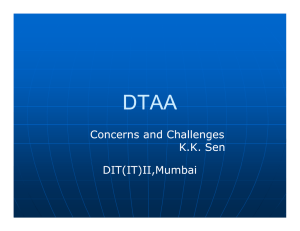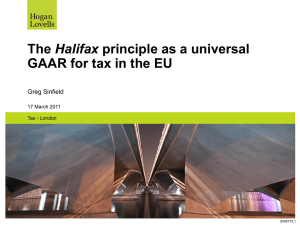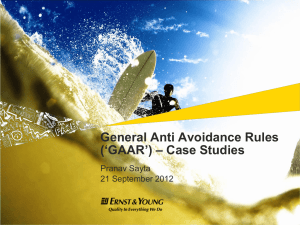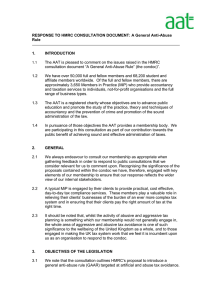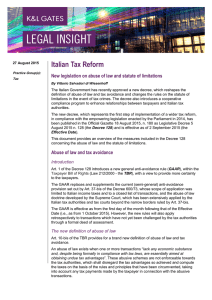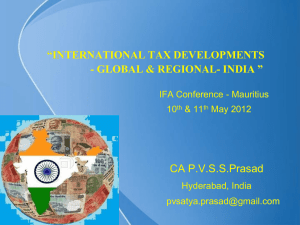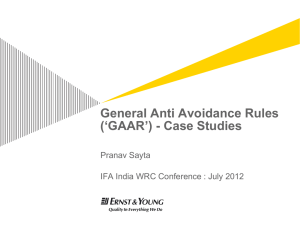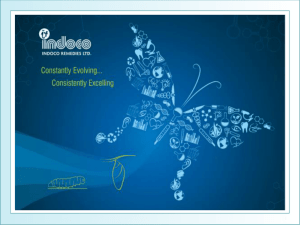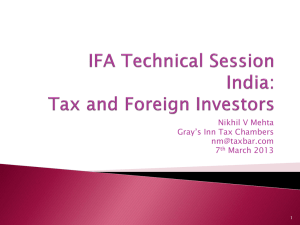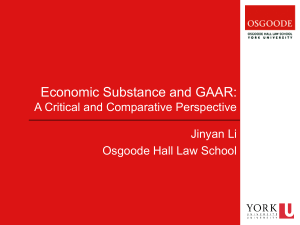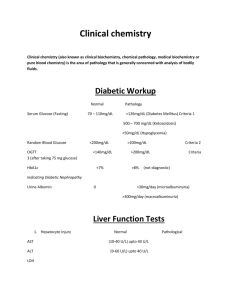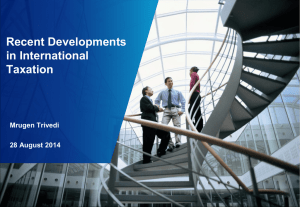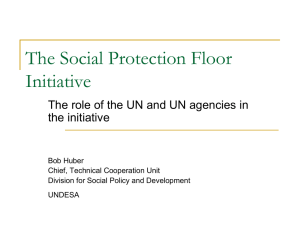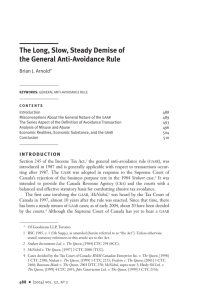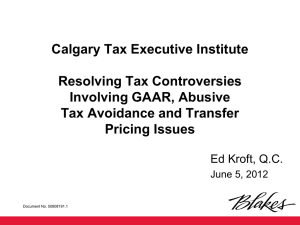GAAR
advertisement
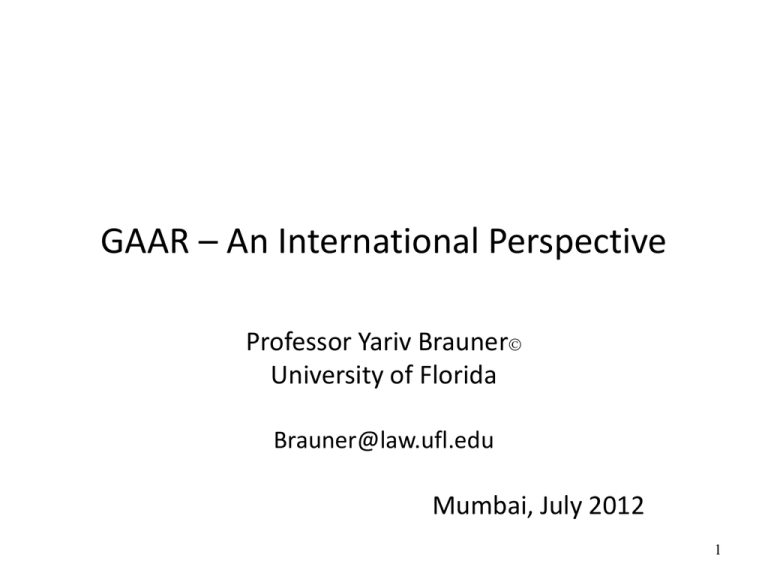
GAAR – An International Perspective Professor Yariv Brauner University of Florida Brauner@law.ufl.edu Mumbai, July 2012 1 Introduction • • • • • What is a GAAR? Rules v. Standards The GAAR debate GAARs and anti abuse rules International Developments What is a GAAR? • Core difficulty: words must be interpreted • Deference to Agency – Beyond general Power – Chevron, Mayo and recent developments (U.S.) – Specific, wide discretion • Attempt to generalize the distinction between acceptable and inacceptable tax planning • Use of principles or standards (words) to overcome the interpretation difficulties Rules v. Standards • Rules are the most constraining and rigid. Once a rule has been interpreted and the facts have been found, then the application of the rule to the facts decides the issue to which it is relevant (unless the case falls within the penumbra of a rule with vague content). – A rule is harder if both the conditions for its application and the consequences that follow are defined by bright-line distinctions that admit of easy application. Rules become softer as they criterion for the application and/or the consequences to which they lead become fuzzier. – • If your goal is ex ante predictability and certainty, then rules are usually the way to go. Predictability and certainty are particularly important when the law seeks to guide future conduct. Standards provide an intermediate level of constraint. Standards guide decisions but provide a greater range of choice or discretion; standards define a set of mandatory considerations. – Standards are less constraining than even "soft" rules. Whereas a rule defines a triggering condition and a consequence, a standard may define a set of relevant considerations and options. – Some standards give the decision maker substantial guidance, by specifying relatively specific and concrete factors the decision maker should consider and the relative weight or importance of those factors. Other standards are much more open ended, requiring consideration of factors that are general and abstract. Standards that refer to "all the circumstances," "the interests of justice," or "equitable considerations" are particularly soft. Rules v. Standards – if our goal is to insure ex post fairness, then standards may be the way to go. Standards permit flexibility and the consideration of mitigating circumstances. • Principles are even less constraining. Principles provide mandatory considerations for judges. Whereas, standards identify an exhaustive set of considerations for adjudication or policy making, a principle identifies a nonexhaustive set, leaving open the possibility that other considerations may be relevant to the decision. – – • Principles by themselves do not resolve legal issues. principles are particularly well suited to give legal form to concerns which operate in a wide variety of particular contexts – operate across doctrinal fields Difficult to choose one methods over the other in tax law – Probably the main issue is the willingness to extend deference to agency The GAAR Debate • Purpose • Trust of agency – political difficulties • choice between rules and standards affects costs – Rules typically are more costly than standards to create, whereas standards tend to be more costly for individuals to interpret when deciding how to act and for an adjudicator to apply to past conduct. – Costs of circumvention / change • Over and under inclusiveness of rules • Corruption & shift of norms over time GAAR, SAARs and Anti Avoidance Rules • Judicial doctrines – – – – Substance over form Business purpose Step transaction Sham transactions • Power to Agency in specific cases – – – – Debt / Equity De facto mini-GAAR in Transfer Pricing Legal approach - minimal Economic substance • Recent limited legislation • History Anti Abuse Rules • Judicial doctrines implemented by the courts – but in the U.S. the Supreme Court refrained from providing guidance • • • • • • • Anti deferral regimes Thin capitalization rules Expatriation taxes Transfer pricing Limitation on hybrids Anti-conduit regulations Reporting and Compliance Anti Abuse Rules (Cont.) • Treaty related rules – Beneficial ownership – Limitation on benefit clauses • • • • Public company test Ownership test Base erosion test Active trade or business test – Residence related limitations – Triangular arrangements rules International Developments • Canada & U.S. (covered elsewhere) • The Aaronson report in the U.K., November 2011. • China 2008 • Issues with long standing Australian rule • India.. • A variety of jurisdictions evaluating approach facing the crisis
